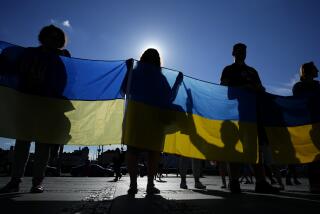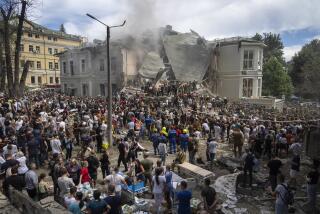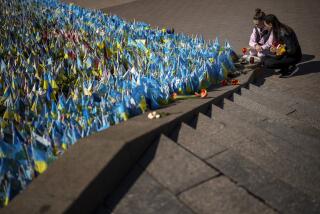
- Share via
AVDIIVKA, Ukraine — Everybody could hear the burst of automatic weapons in the distance. But inside the dimly lighted halls of the Avdiivka City Hospital, doctors and nurses paid it little mind.
The hospital sits three miles from the front line of the five-year war between Ukraine and Russia-backed separatists. The echoes of battle have long been their daily soundtrack.
The hospital director, Dr. Iryna Lagoda, can identify the caliber of each mortar round and whether it’s incoming or outgoing.
She and the staff often feel forgotten out here near the front — perhaps never more so than when they learned along with the rest of the world that President Trump had withheld $391 million in military aid to pressure Ukraine to investigate Democrats.
Often lost in the debate about that effort, the heart of the impeachment inquiry roiling Washington, is the reality on the ground in Ukraine. The United Nations says the war has claimed about 13,000 lives, and the Ukrainian military says it has lost 4,150 of its soldiers, including more than 80 this year.
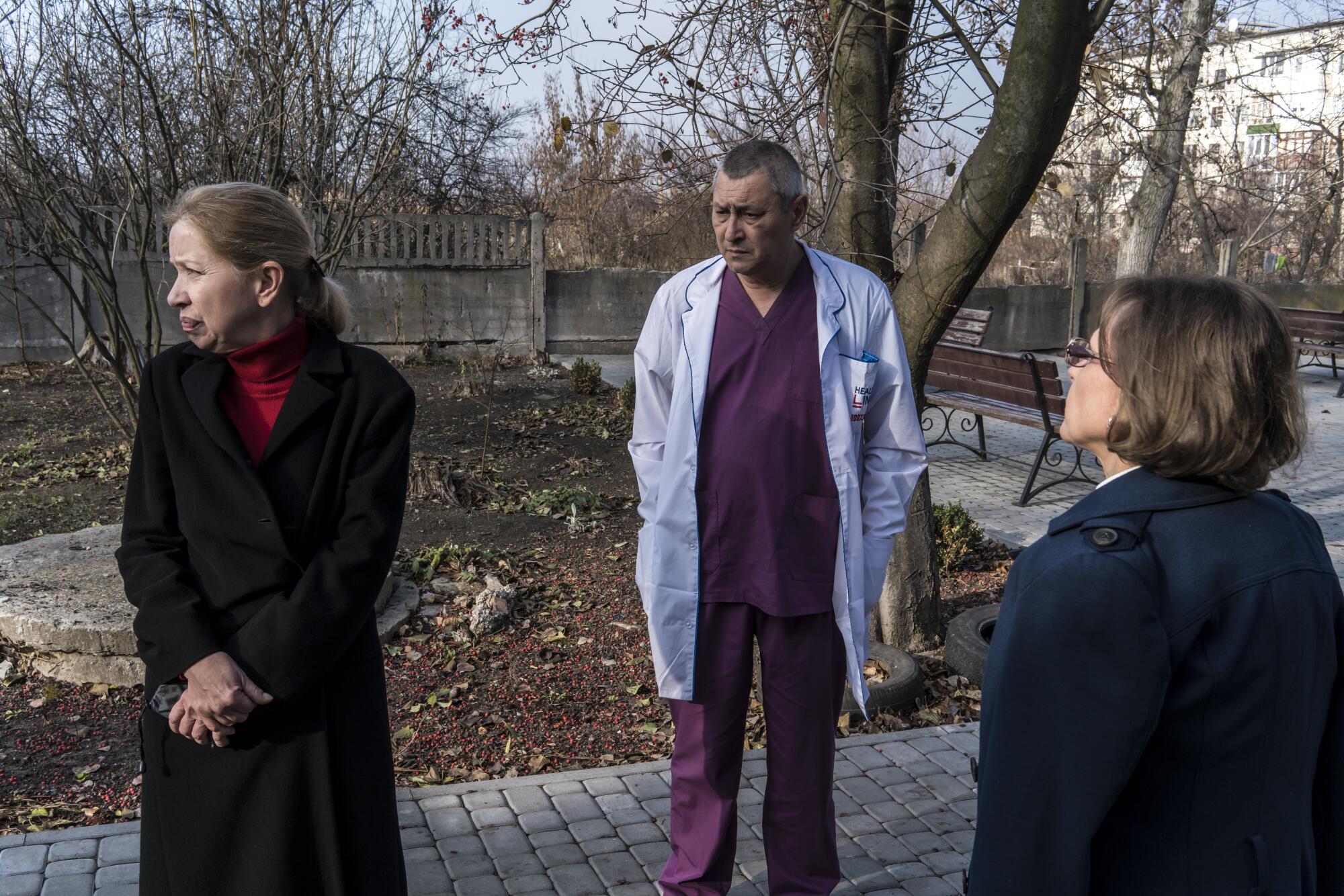
“What do Americans know about Ukraine?” Lagoda said. “Do they know we have a war going on here?”
Behind her, across a courtyard, stood a five-story ruin that was once the hospital’s main building, before tank fire, mortar shells and heavy artillery ripped through the roof, slammed into the emergency room and shattered every window. The field next to it is laced with land mines.
In all, the campus has taken 20 direct hits, destroying four of the seven buildings.
Dr. Tatiana Teplyakova, the chief of the lab, pointed to shrapnel marks on the walls and ceiling of her quarters on the first floor of the former maternity ward, now the main building of the hospital.
“This is all happening here in Europe, in the 21st century,” she said.
Seeing their country used as a pawn in U.S. domestic politics has left Teplyakova and many other Ukrainians wondering whether they now stand alone in their fight against Russian aggression.
“We’ve just come to understand that we must do things on our own,” she said.
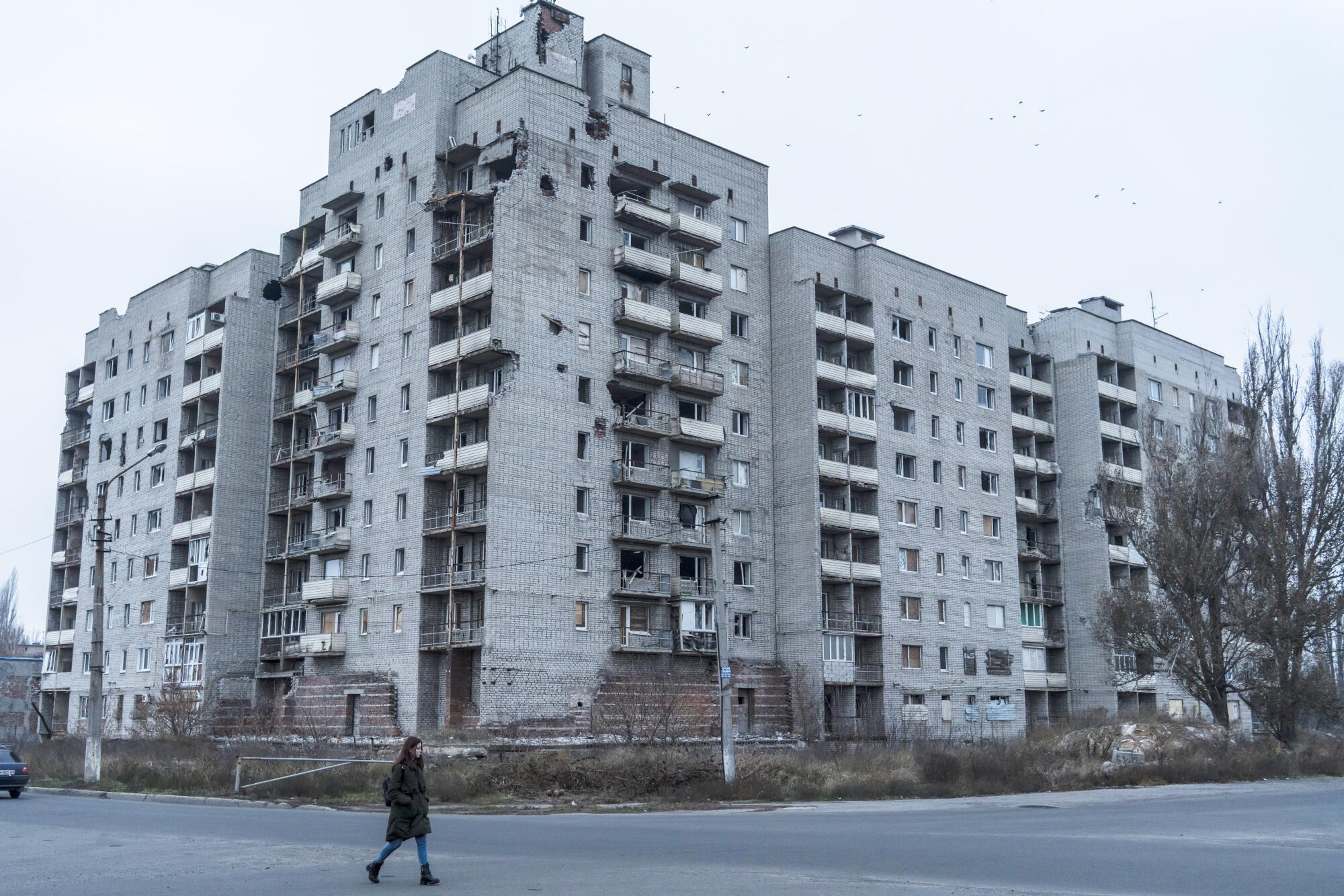
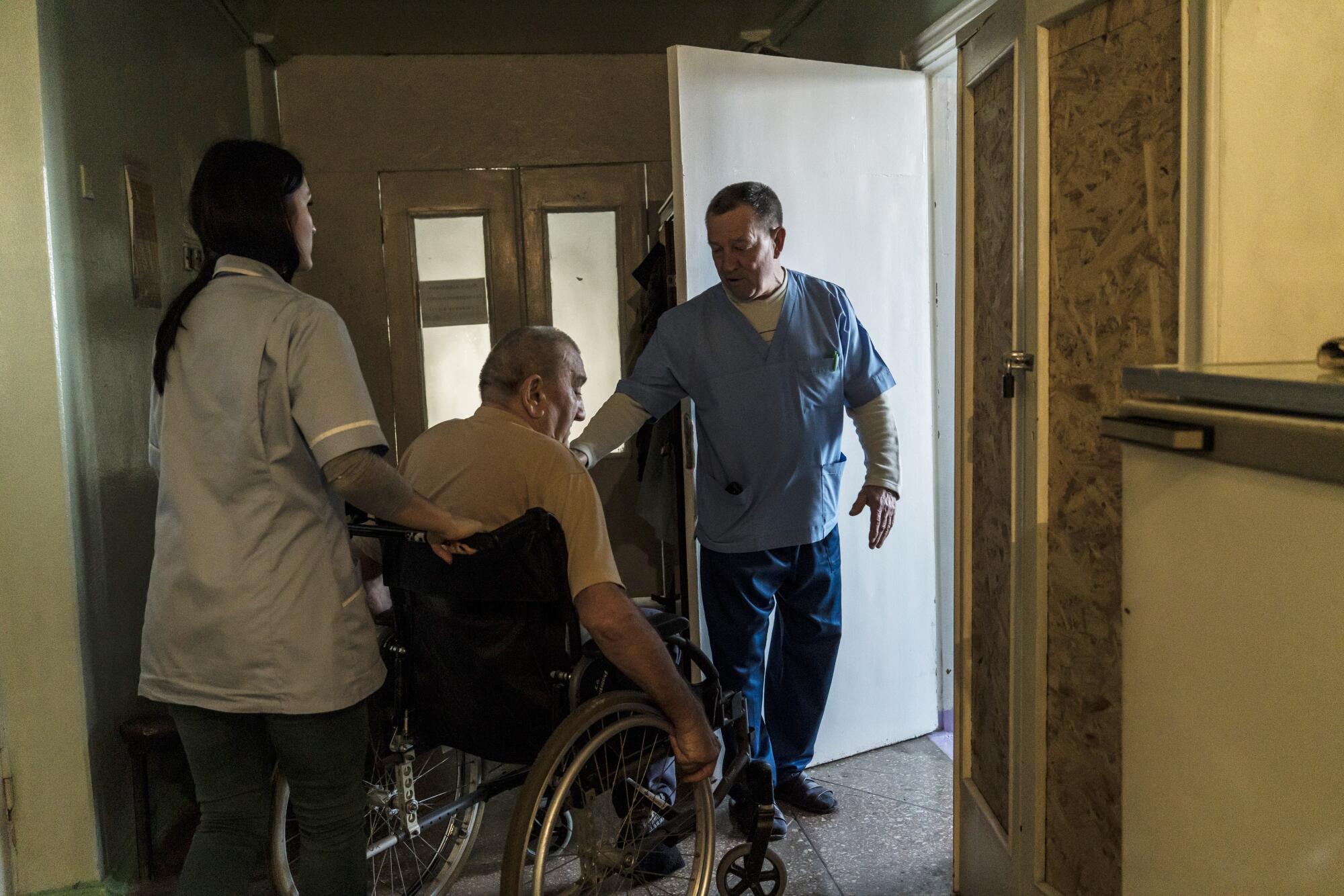
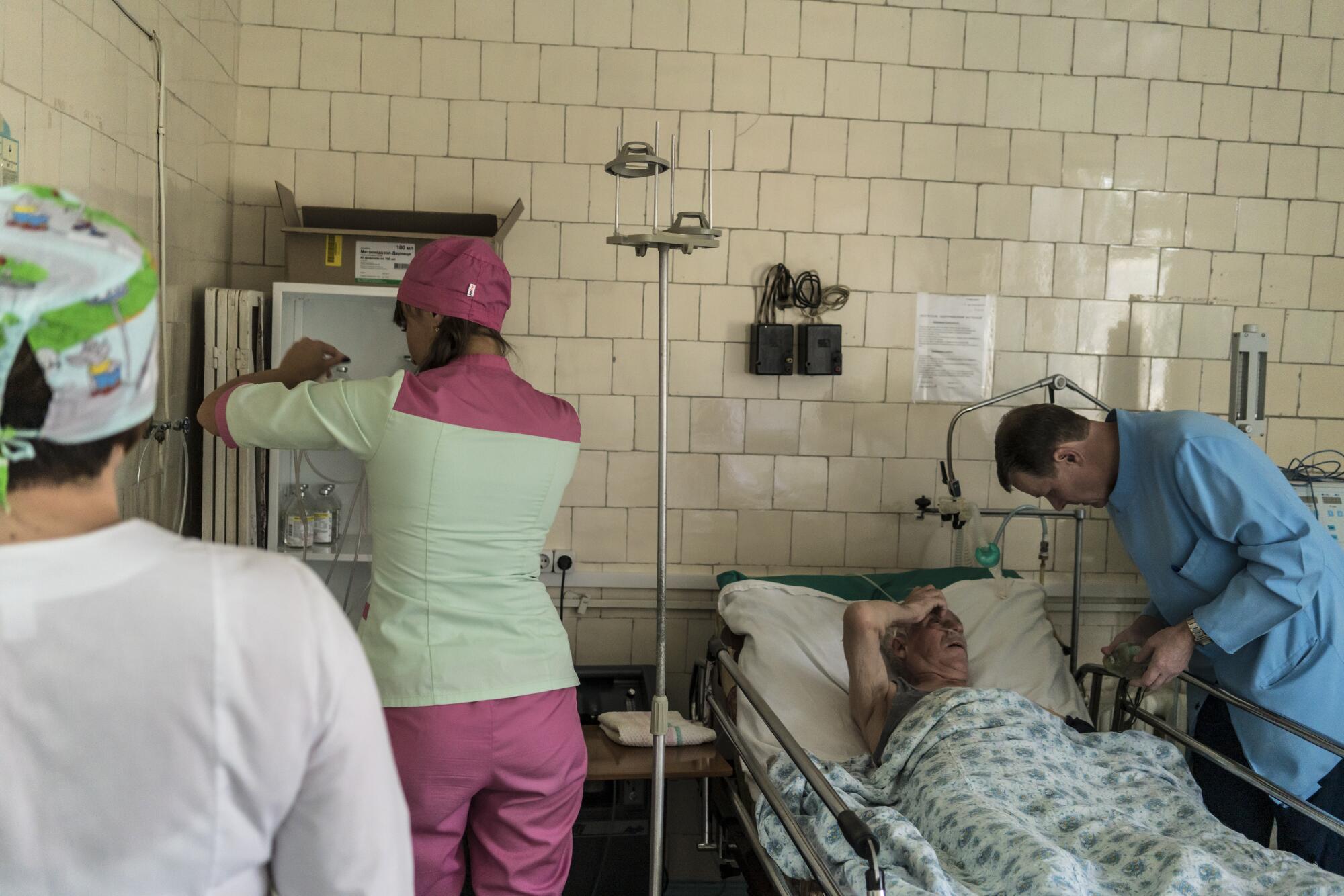
Before the war, Avdiivka was a sleepy suburb of 35,000 people whose lives largely revolved around a massive Soviet-era coal processing plant that hovers over the edge of town and anchors the regional economy.
It employed 4,000 workers, who toiled turning coal into coke used to fuel Ukraine’s biggest metallurgic factories.
Natural gas from the plant heats Avdiivka’s rows of housing blocks and other buildings, including the hospital.
Then in 2014, a street revolution in the capital, Kyiv, ousted then-President Viktor Yanukovich, who favored closer ties with Russia. That paved the way for the election of a Western-oriented government, but also prompted Russia to annex Ukraine’s Crimean peninsula.
That April, separatist militias backed by Russia took over several eastern Ukrainian cities, including Avdiivka, and declared them part of the so-called Donetsk People’s Republic.
Avdiivka stood on the geopolitical fault line between a resurgent Russia and the West, with the United States promising to back Ukraine.
The actual battle line fell not far from the Avdiivka City Hospital on the road to Donetsk, a cosmopolitan city that became a rebel stronghold. The war came to the hospital grounds that May as Lagoda was conducting a staff meeting in her office.
“It looked like mushrooms popping out of the ground as the shells exploded,” she said.
The staff rushed the 200 patients into the basement bomb shelter.
Before the conflict, the community hospital was a place to deliver a baby or have an appendix removed. But as the closest medical facility to the front line, it soon became a makeshift military hospital.
Doctors with little training in combat wounds were soon treating more soldiers than civilians. The Ukrainian military sent in specialists to work side by side with the hospital staff.
“We picked up a lot of on-the-job training,” said Dr. Anatoly Arkatov, a general surgeon who has worked at the hospital for 40 years.
By September 2014, half the hospital’s buildings had been destroyed by shelling. Thousands of Avdiivka residents fled, along with about a third of the hospital staff.
Other doctors and nurses sent their families to live in safer parts of Ukraine, then moved into the hospital, sleeping in offices or the hallways for weeks at a time.
For five months in that first year of war, the hospital had no heat or electricity. There was no water for 11 months, and hospital staff brought in buckets of water from streams and ponds nearby for boiling. Doctors performed surgery by candlelight in the basement of the maternity ward.
Two weeks after Trump was sworn in as president in January 2017, Avdiivka became the center of the war again in the worst fighting in several years. Heavy shelling lasted for a month, cut off the heat and electricity to the city and nearly shut down the coal processing plant.
The hospital lost heat as February temperatures plunged below zero. Doctors walked around with drip medicine pouches tucked inside their coats to keep them at body temperature before administering them to their patients. The hospital stayed open even as most of the city was evacuated.
“People ask me why I stayed this whole time and why I didn’t just leave when I could,” said Dr. Oleksandr Poltoradnya, the head of anesthesiology. “I don’t know what to say. I just look at them and say, ‘I must be crazy.’”
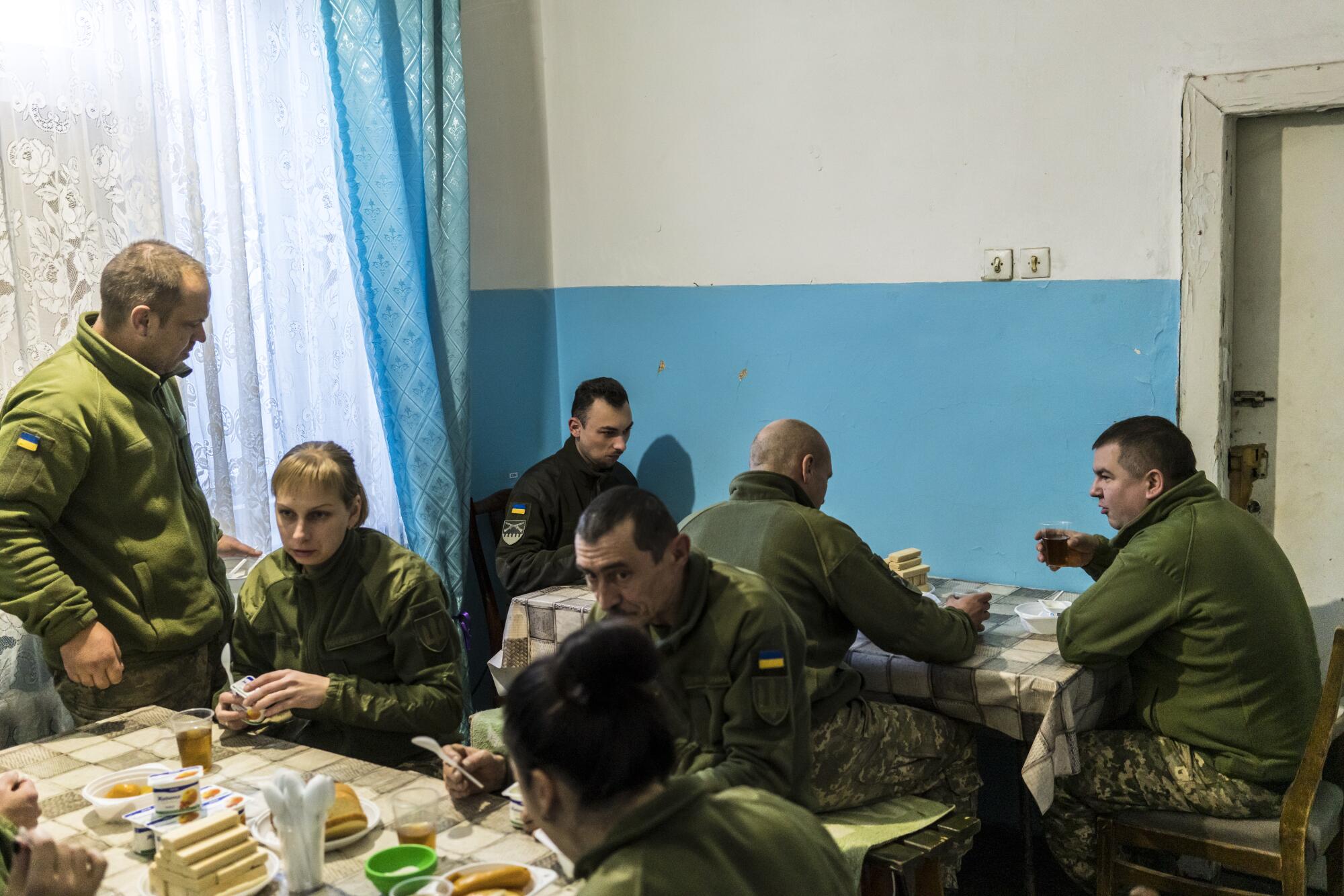
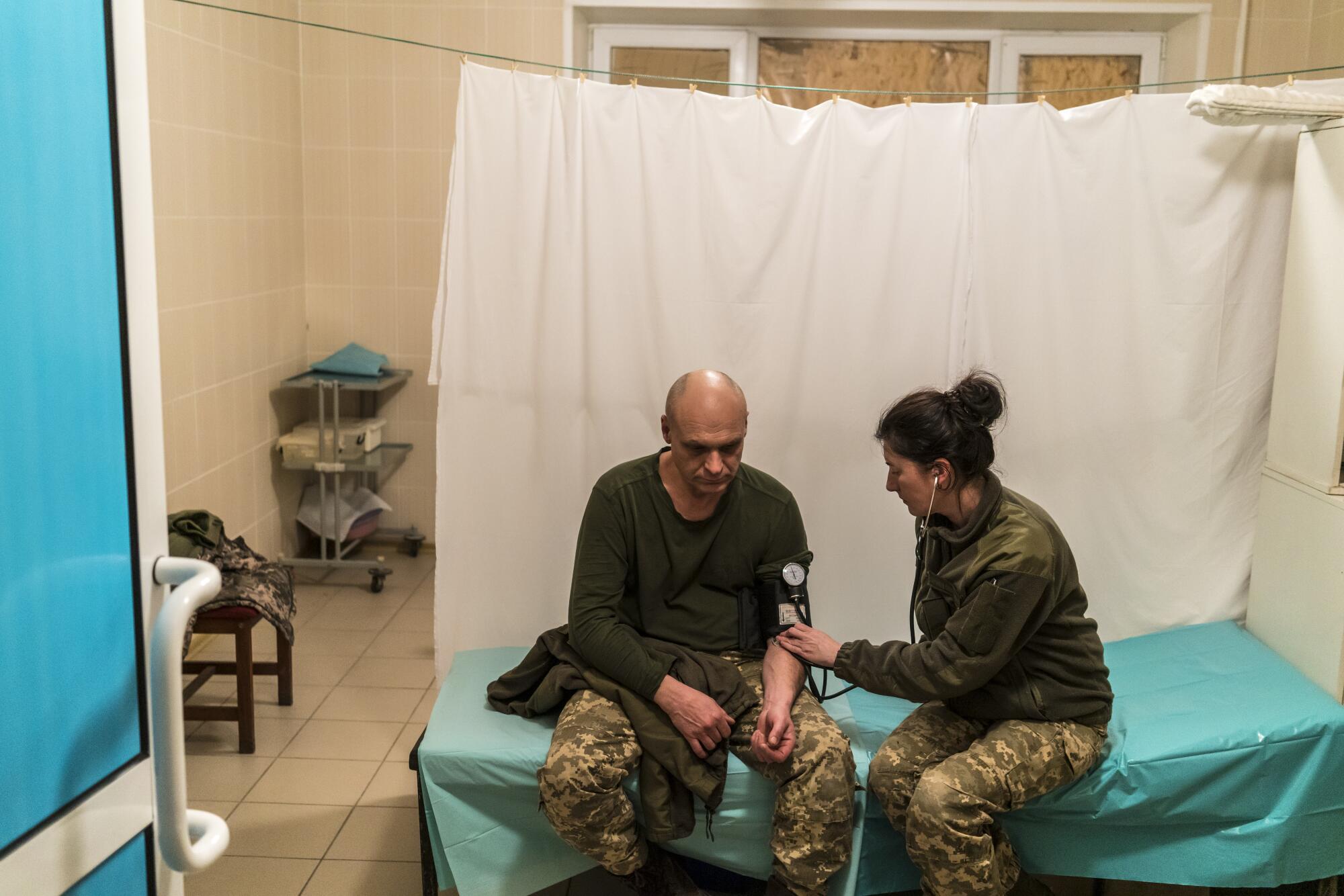
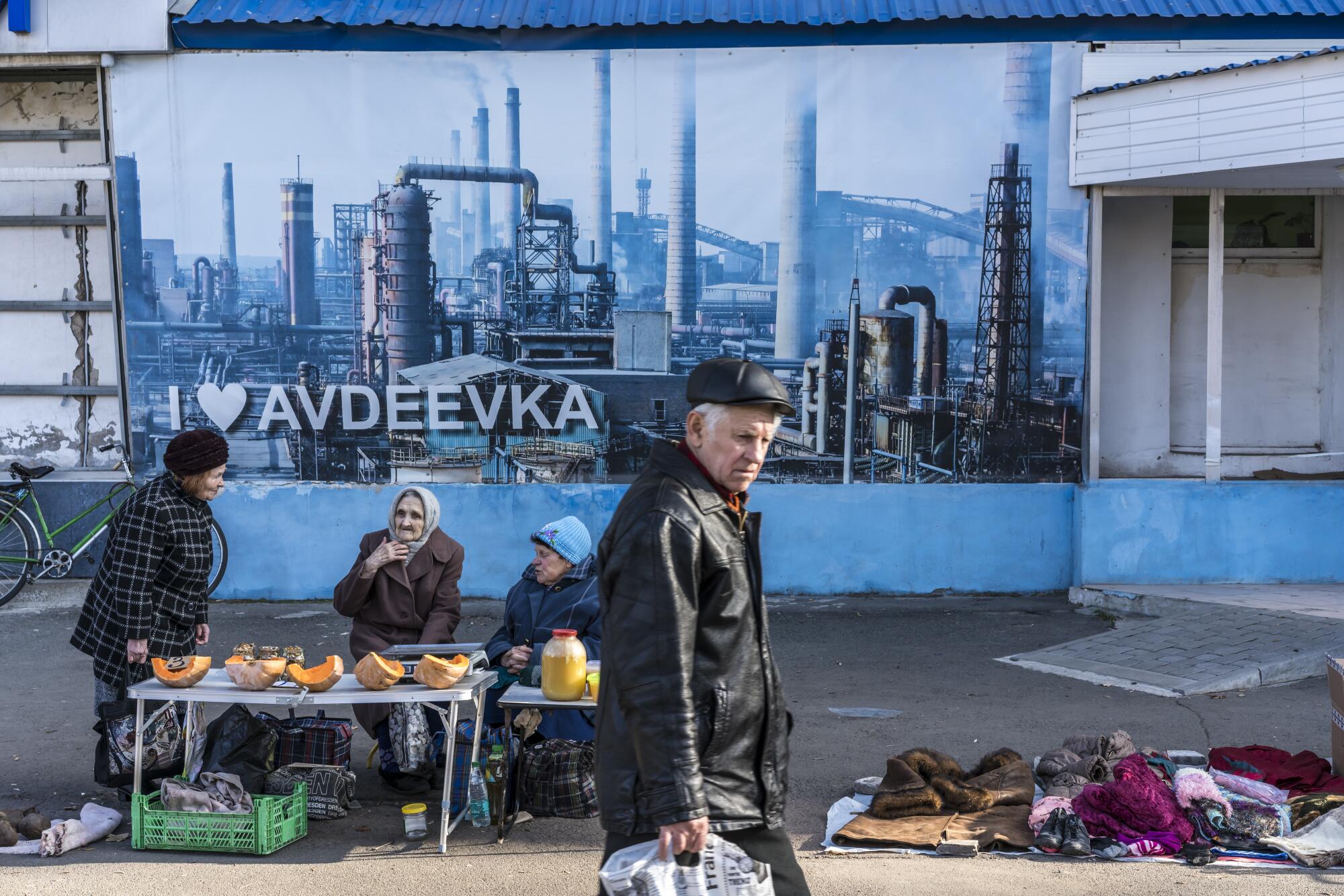
The hospital has seen about 300 soldiers and 200 civilians a year over the course of the war.
The fighting continues in ebbs and flows. The hospital staff lives in fear of a new uptick in combat.
On Nov. 7, a mortar shell fired from the pro-Russia militia side hit a Ukrainian army truck not far from Avdiivka. One soldier was killed instantly. Two were wounded.
A fourth was brought to the hospital in critical condition. Surgeons and military doctors worked for hours but failed to save him.
On the day of the attack, acting U.S. Ambassador William B. Taylor Jr. was visiting the front lines with Ukrainian President Volodymyr Zelensky’s team to examine Ukrainian troop withdrawals as part of negotiations with Russia to end the conflict.
A week later, Taylor testified to Congress in the impeachment trial.
“Part of the strength, part of the ability of the Ukrainians to negotiate with the Russians for an end to the war ... depends on the United States and other international support,” he testified. “If we withdraw or suspend or threaten to withdraw our security assistance, that’s a message to the Ukrainians.”
Zelensky and Russian President Vladimir Putin are scheduled to meet in Paris on Dec. 9 for peace talks headed by the leaders of France and Germany.
The Avdiivka City Hosptial has taken advantage of quieter periods of the war to make improvements. The children’s clinic has been repaired and converted into an infections ward with tile in bright yellow and blue, the colors of the Ukrainian flag. Shrapnel damage on the second floor of the former maternity ward is being fixed to create new warmly lit patient rooms.
There is still no elevator, so when patients need X-rays, doctors and nurses carry them on stretchers up and down three flights of stairs.
Dr. Vitaliy Sytnyk, the deputy chief of the hospital, said the hardest part of his job these days is reassuring his staff when they ask when the war will end.
“You can tell them that it will end soon, but the truth is that you know very little about what will happen in the future,” he said.
In the meantime, the soundtrack of war plays in the distance.
“Don’t listen to anyone who tells you that you get used to the sound of shelling,” Sytnyk said. “You never do.”
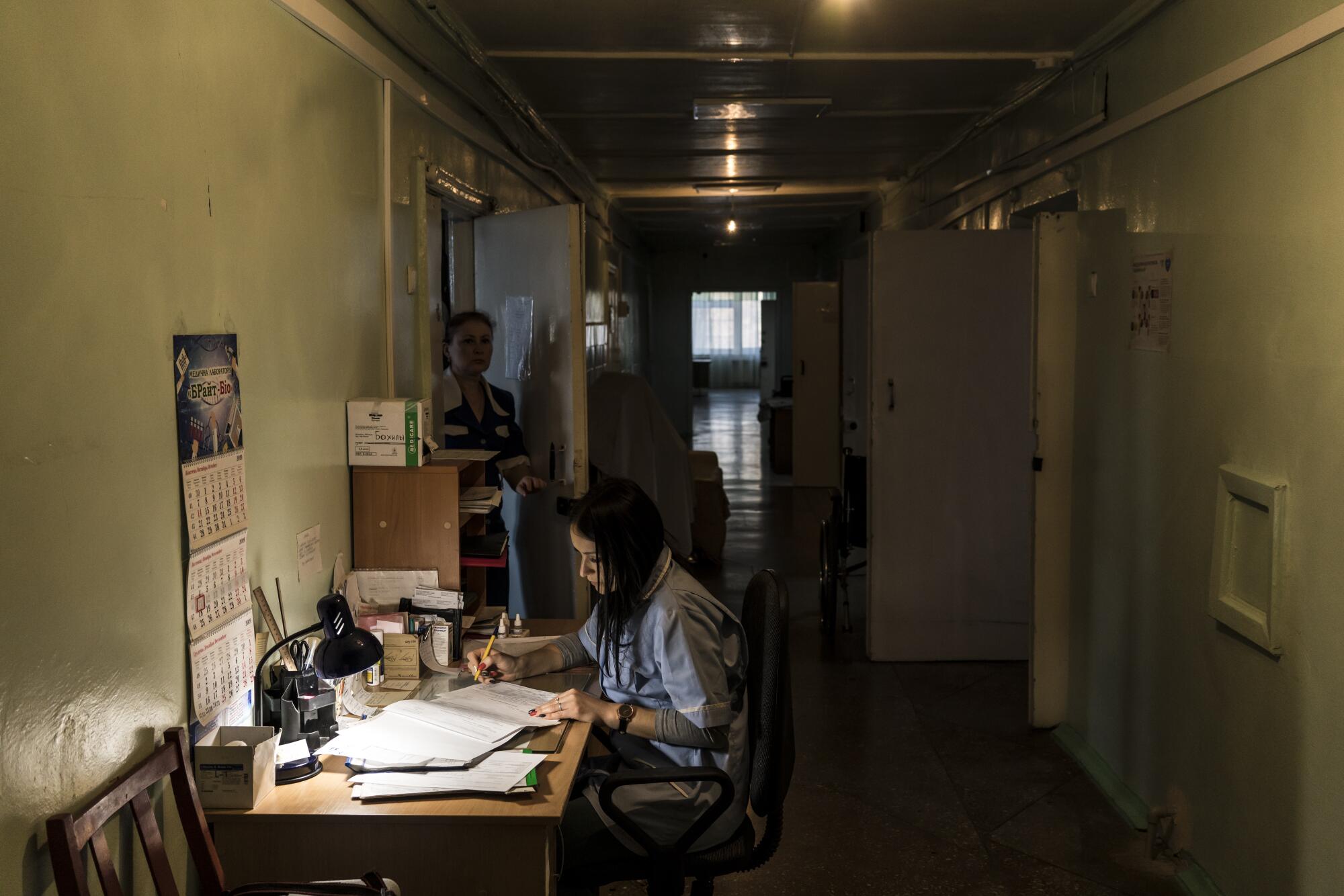
More to Read
Sign up for Essential California
The most important California stories and recommendations in your inbox every morning.
You may occasionally receive promotional content from the Los Angeles Times.
